
How To Write A Blog Post For Your Affiliate Website In 7 easy Steps

Table of Contents
Introduction
Affiliate marketing remains one of the most profitable side hustles, with the industry projected to surpass $15.7 billion globally by 2025. Success, however, requires more than scattering affiliate links across your site. The key lies in creating engaging, valuable content that resonates with your audience. Blogging has become a powerful tool for affiliate marketers, with blogs driving 55% more website visitors and generating 67% more leads than businesses without blogs.
For aspiring affiliates, mastering the art of blog writing is crucial to capturing attention, building trust, and driving traffic to your site. Whether you’re a seasoned marketer or just starting, creating well-structured, engaging content can set the foundation for your success. In this guide on how to write a blog post for your affiliate marketing website, we will walk you through a proven step-by-step process for crafting compelling blog posts tailored to your affiliate marketing website. From choosing the right audience and doing Keyword research to optimizing for conversions, you’ll learn how to create content that informs and converts readers into loyal customers.
Step 1: Identify Your Target Audience
Before you start writing, take a minute to think about who you’re writing for. Knowing your audience is key to creating content that really clicks, something that solves their problems and gets them to take action. Take some time to learn about their demographics, interests, challenges, and habits. This kind of research helps you create content that matches their needs and goals. For instance, if your audience loves healthier baking options, you could write a blog like “10 Low-Calorie Baking Recipes for Guilt-Free Indulgence.”

There are plenty of tools that can help you determine your target audience. These tools include Google Analytics, social media insights, keyword research platforms like Ahrefs or SEMrush, surveys, and even competitor analysis tools like BuzzSumo. Once you’ve got a handle on what your audience cares about, you can adjust your tone, style, and topics to make them feel more personal. That’s how you make your content impactful, shareable, and remarkable for building trust.
Step 2: Do keyword research
The Second step in writing a blog post for your affiliate marketing website is keyword research. Keyword research is the secret to writing blog posts that really connect with readers and perform well on search engines. It helps you determine what your audience is searching for on platforms like Google, Bing, or YouTube. Using the right, high-volume keywords can significantly improve your search engine optimization (SEO) rankings. With 68% of online experiences starting on search engines, optimizing for those search queries is essential if you want to grab attention.
But keyword research isn’t just about boosting rankings; it’s about understanding what your audience cares about. When you address User Search Intent (basically, the “why” behind a search), you can align your content with what they’re really looking for. Whether they need solutions, product recommendations, or step-by-step guides, matching their intent makes your content more engaging and increases conversions. Fun fact: Google says 51% of smartphone users discover new businesses or products through searches tied to intent.

Tools are your best friend when you are trying to nail keyword research. Free tools like Google Keyword Planner, Trends, and Search Console are great for beginners, while paid options like SEMrush, Ubersuggest, and Ahrefs offer more in-depth analytics. Did you know that Ahrefs found 90.63% of content receives zero Google traffic? Yep, poor keyword optimization is a big reason. Using the right tools and strategy can help you avoid that and create content that attracts clicks, builds trust, and keeps people coming back for more.
Good keyword research isn’t just about better rankings. It helps you understand your audience, create content that delivers real value, and grow your engagement and loyalty. It’s about more than just finding the right words, it’s about writing blogs that resonate and drive results.
Pro Tip: Paid keyword tools like Ahrefs, Semrush, and Ubersuggest are better than free tools like Google Keyword Planner, Google Trends, and Google Search Console at providing comprehensive and reliable keyword data that can help your site Rank higher.
Step 3: Create a headline for the blog
Once you’ve done your keyword research, the next step to nailing a successful affiliate blog is crafting an attention-grabbing headline. Think of your headline as the front door to your content. It’s often your only shot to hook a reader. Studies show that while 80% of people read a headline, only 20% actually click through to the content. So yeah, your headline matters a lot.
For affiliate blogs, headlines are even more crucial. A good headline doesn’t just grab attention; it also helps your blog rank better on Google and boosts click-through rates (CTR). According to Search Engine Land, titles that include keywords rank in the top 5 positions on Google 85% of the time. That means sprinkling in targeted keywords like “affiliate marketing” or “maximize ROI” can do wonders for your SEO.
But let’s be clear: grabbing attention doesn’t mean using super vague or overly clever titles. Focus on being clear and relevant. A headline like “Top 10 Tools for Affiliate Marketers to Maximize ROI” works because it promises value and uses strong keywords that resonate with your audience.
Keep it short and sweet, too. Research says headlines between 6 and 13 words have the highest engagement rates. Shorter titles are easy to skim and get straight to the point, which is exactly what readers need when scrolling through search results.
A great headline is more than just a few catchy words; it’s a promise to your readers. Combine your keyword research with clear, audience-focused writing, and you’ll have headlines that drive clicks and help your blog shine in search rankings.
Step 4: Create an outline for the blog
Once you’ve completed your keyword research and created an attention-grabbing headline, it’s time to create an outline for your blog post. An outline is a roadmap that helps guide the direction of your content and ensures that you cover all the essential points. A basic outline should include an introduction, body paragraphs, and a conclusion. For example, if you are writing a blog post about the importance of keyword research for your affiliate marketing blog, below is what an outline for your blog could look like.
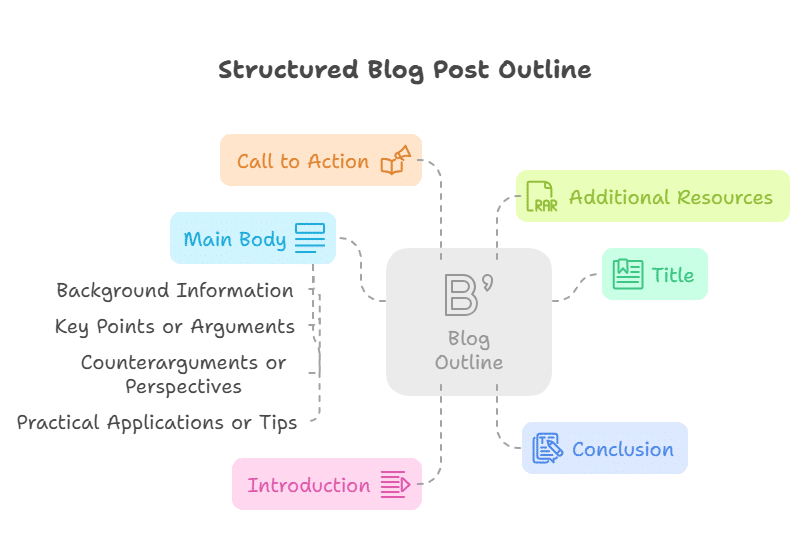
Introduction
- Explain the importance of keyword research in digital marketing
- Mention how it helps with SEO efforts and SERP rankings
- Introduce the concept of user search intent
Body
- Define keyword research and its purpose
- Discuss the different types of keywords (long-tail, short-tail, and LSI)
- Explain how to use free tools like Google Keyword Planner, Trends, and Search Console for keyword research
- Highlight the benefits of using paid tools like Ahrefs, Semrush, and Ubersuggest
- Emphasize the importance of user search intent in creating optimized content
- Provide tips for using keywords effectively in website content, including proper placement and density
Conclusion
- Summarize the key points discussed in the blog post
- Reiterate the importance of keyword research for affiliate marketing success
- Encourage readers to utilize keyword research tools and strategies for improving their SEO efforts. Overall, creating high-quality content that meets user search intent is key to driving organic traffic and conversions.
In addition to the basic outline, you can also include subheadings within each section to further organize your content. This will make it easier for readers to navigate through your blog post and find the information they are looking for.
Step 5: Create Engaging Content
Now that you’ve got your blog outline ready, it’s time to turn it into content that grabs attention and keeps readers hooked. A great blog post always kicks off with a strong introduction. Skip the boring stuff and start with a fun fact, an interesting question, or a quote that ties into affiliate marketing (or whatever your topic is). This sets the tone and shows readers why they should stick around. Tease your main points to spark curiosity and encourage them to keep reading.
Once you’ve reeled them in, it’s time to deliver the goods in the body of your blog. Share detailed insights backed by research or real-life examples. Adding data or stats is Awesome since it builds trust. Toss in some personal stories or case studies; they are perfect for making your post relatable and engaging.
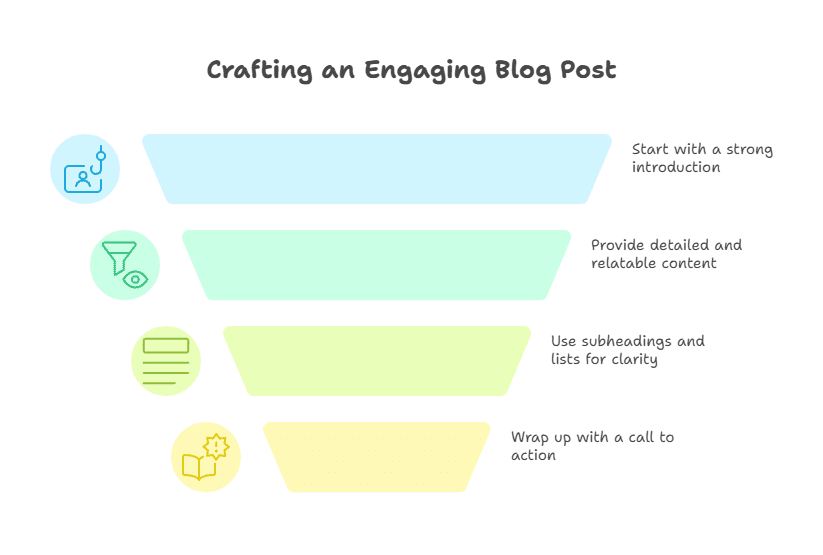
Structure is key, too. Use subheadings to guide readers and break up the information with bullet points or numbered lists, making it easy to scan. Keep it friendly and conversational, write like you’re chatting with your audience, and ditch any confusing jargon.
Finally, wrap it up with a firm conclusion and a call to action (CTA). Ask readers to leave a comment, follow you on social media, or click a link for more information. CTAs are great for starting conversations and building a community around your blog.
Pro-tip: The more engaging, relatable, and valuable your content is, the more likely it will be shared across platforms, amplifying its reach. By combining these tips with thoughtful writing, your blog will captivate readers and drive results for your affiliate marketing efforts.
Here are a few tips to help make your content more engaging:
- Use relevant and eye-catching images or graphics to break up text and add visual interest
- Incorporate statistics and data to support your points
- Include personal anecdotes or examples. This adds a personal touch and helps readers connect with the content
- Use subheadings, bullet points, and numbered lists to make your content more scannable
- Write in a conversational tone and avoid using overly technical jargon. Remember, you want your content to be easily understandable for all readers.
- Conclude with a call to action, encouraging readers to share their thoughts or engage with the blog post through comments or social media.
Step 6: Add images and relevant infographics
Once you’ve got some engaging content, it’s time to take it to the next level with eye-catching visuals like images, infographics, and videos. Visuals aren’t just there to look pretty; they’re a powerful way to grab attention, make your message more precise, and improve the overall experience for your readers. According to Hubspot, blog posts with images get 94% more views than posts without. That’s why visuals are a must if you want your content to really stand out.
Start with your featured image. It’s the first thing people see and can make or break that all-important first impression. A high-quality, attention-grabbing image can help draw readers in, especially when your post gets shared on social media or appears in search results.
Infographics are another great tool for enhancing your content. They take complicated information and turn it into something easy and fun to understand. Plus, research says that people remember 30% of what they see versus only 10% of what they read. Infographics are perfect for this because they’re clear and super shareable on platforms like Pinterest, Instagram, and LinkedIn.
Using images also helps break up long paragraphs. In reality, big chunks of text can feel overwhelming. Adding visuals makes your content feel lighter and easier to read. For example, if you’re writing about affiliate marketing tips, a process flow chart or pie graph can clarify your points and add some flair.
To maximize your visuals, stick with high-quality, relevant images that match your brand’s vibe. Great visuals do more than add polish; they make your content more enjoyable, drive traffic, and encourage people to share it. By incorporating the right visuals, you’ll create content that’s not only helpful but also visually appealing.
Step 7: Edit and proofread for clarity
The Last step on how to write a blog post is editing and proofreading. This step is crucial for creating high-quality content that resonates effectively with your audience. After completing your draft, dedicating time to refining your work ensures it’s polished, error-free, and professional.

Here’s how to approach the editing process effectively:
Key Points for Editing and Proofreading:
- Check for Spelling and Grammar Errors: Use tools like Grammarly or do a manual review to correct typos and grammatical mistakes.
- Ensure Logical Flow: Verify that your ideas transition smoothly from one paragraph to the next, creating a cohesive narrative.
- Eliminate Redundancy: Remove repetitive or unnecessary information that doesn’t add value to your content.
- Simplify Where Necessary: Ensure your message is clear, concise, and easy for readers to understand.
- Maintain Consistency: Check for formatting, tone, and style consistency across the post.
- Optimize Word Choices: Use precise and engaging language that aligns with your audience’s preferences.
- Add Links if Needed: Ensure internal and external links are used appropriately for added credibility and resources.
- Break Up Long Sentences: Edit lengthy sentences for better readability.
Additional Tips:
- Fresh Perspective: Have someone else review your post to catch mistakes you may have missed and provide constructive feedback.
- Final Proofread: After revising, review your post one last time to ensure it’s error-free and of top quality before publishing. By thoroughly editing and proofreading, you guarantee that your blog leaves a strong impression and effectively engages your readers.
How to write a blog post: Conclusion
As we come to the end of our post, How to Write a Blog Post, it is essential to know that writing a blog post can feel a bit tricky at first, but with practice, a clear plan, and some dedication, you’ll soon get the hang of it. Start by picking topics you’re genuinely interested in, do your research, and organize your thoughts before diving in. And don’t forget visuals can really bring your content to life! Once you’re done writing, take time to edit and proofread so your work comes across as polished and professional.
Blogging isn’t just about the finished product. It’s all about the process. It’s your space to let your unique voice and perspective shine. Keep experimenting, try new styles, and step out of your comfort zone. The more you write, the better you’ll get at connecting with your audience and creating content that truly resonates.
Remember, this is just the beginning of your blogging journey. Every post you write is another step toward mastering your craft. Stay curious, keep improving, and most importantly, enjoy the ride. Blogging isn’t just about content creation, it’s about sharing your ideas, inspiring others, and growing along the way.
Additional Resources
- Grammarly – a helpful online tool for grammar and spelling checks
- Hemingway Editor – a writing tool that highlights complex sentences and common errors
- Canva – a design platform for creating visuals and infographics
- CoSchedule Headline Analyzer – a tool to help you create compelling headlines for your blog posts.
These are just a few resources to aid your blogging journey. Don’t be afraid to explore and find what works best for you.
Frequently Asked Questions
How do I write a blog post for my affiliate marketing website?
Creating a successful blog post for your affiliate marketing website involves these key steps:
Choose a Niche – Focus on a specific area of interest that aligns with your audience and affiliate products.
Research Keywords – Use tools like Google Keyword Planner, SEMrus
h, or Ahrefs to identify high-traffic keywords relevant to your niche. Include these keywords naturally in your content.
Create High-Quality Content – Write engaging, informative, and valuable blog posts that resonate with your readers and solve their problems.
Insert Clear Affiliate Links – Add affiliate links contextually in a natural way that doesn’t overwhelm the reader. Always disclose affiliate relationships.
Promote Your Post- Share your blog on social media and through email newsletters, and collaborate with others in your niche to increase visibility and traffic.
How do I start writing a blog?
Starting a blog is simple if you follow these steps:
Choose a Blogging Platform – Platforms like WordPress or Squarespace are popular and user-friendly.
Pick a Niche – Select a subject you’re passionate about and that has an active audience.
Define Your Target Audience – Understand the needs, interests, and problems of the people you want to reach.
Brainstorm Topics – List relevant blog post ideas based on your niche and target audience.
Start Writing Regularly – Maintain a consistent schedule to build and grow your audience over time.
Do bloggers make money?
Yes, bloggers can make money through various methods, including:
Affiliate Marketing – Earn commissions by promoting products and including affiliate links in your posts.
Advertising – Display ads on your blog through networks like Google AdSense.
Sponsored Posts – Collaborate with brands to promote their products or services.
Selling Digital Products – Offer eBooks, online courses, or templates.
Providing Services – Use your blog to market freelance services like writing, graphic design, or consulting.
The key to earning consistently is building trust with your audience and providing valuable content.
What is the difference between a blog and a vlog?
The primary difference lies in the format:
Blo – A text-based platform where written content is the main medium. It’s ideal for longer, more detailed explanations and is easily discoverable via search engines.
Vlog – A video-based blogging format. Vlogs are great for dynamic, visual storytelling and are often shared on platforms like YouTube.
Many content creators combine both to maximize reach and engagement.
How do I write a blog post that ranks?
To create a blog post that ranks high on search engines:
Perform Keyword Research – Identify relevant, high-traffic keywords and incorporate them naturally into your content.
Create High-Quality Content – Write in-depth, well-structured posts that give your readers unique insights and real value
Optimize for SEO – Use headings (H1, H2), meta descriptions, alt texts for images, and internal links to improve your post’s searchability.
Build Backlinks – Collaborate with others or create shareable content to get external websites to link back to your blog.
Promote Your Content—To maximize visibility, Distribute your blog through social media, email newsletters, or guest blogging.

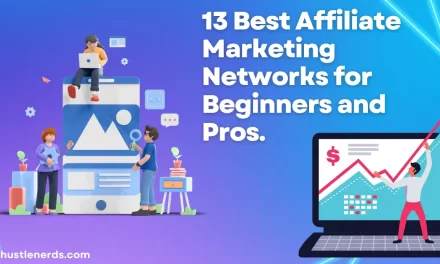




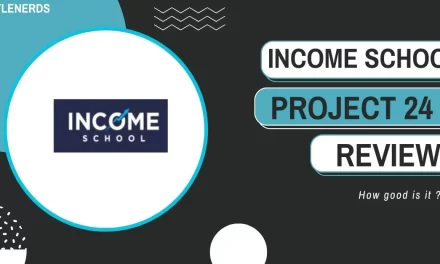










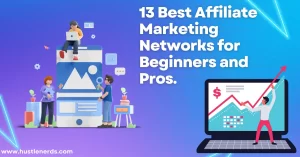





Recent Comments